By: Patrick W. Zimmerman
We’ve been keeping an eye on our Tweeter-in-Chief for the past several months. This has partially been to highlight some of the batshit insane things he says on a regular basis, partially to point out the relative importance and uniqueness of Trump’s language, and, of course, to document the claims he makes and call him out when he shifts gears. Such as:
We will immediately repeal and replace ObamaCare - and nobody can do that like me. We will save $'s and have much better healthcare!
— Donald J. Trump (@realDonaldTrump) February 9, 2016
or
I am not trying to get "top level security clearance" for my children. This was a typically false news story.
— Donald J. Trump (@realDonaldTrump) November 16, 2016
or perhaps
The "Unaffordable" Care Act will soon be history!
— Donald J. Trump (@realDonaldTrump) January 13, 2017
The question
Can we use Trump’s tweets as a historical chart of his reaction to events around him?
The short-short version
We can pretty use his tweets as a timeline of Trump’s Brain. Yeah.
Trump’s twitter behavior has clearly evolved over time as he’s reacted to the scandals that have rolled through his transition and (brief, rollicking, topsy-turvy) presidency. While there are some gaps where he goes totally silent on something, such as the second block on his travel ban, for the most part, Trump spends a lot of his time tweeting about his obsessions, interests, and flights of fancy on any given week. So we decided to chart his tweets since the election, week by week, taking 50 ngrams that were particularly interesting for political (leak*), psychological (bad*), or grammatical (total*) reasons (the asterisk is a wildcard).
Also, yes, he really does say great so much it triggers the urge to bulk mail thesauri to 1600 Pennsylvania Ave.
Selected terms
The thing that jumps out is how certain subjects that were important to him early (hillary) have faded, and others (fake*news) have kind of exploded out of nowhere in response to the political news of the day.
- hillary and election: these two obsessions of Trump’s in the early going fade in importance over the life of the corpus. This makes perfect sense, as gloating over his surprise victory over Hillary Clinton and delegitimizing the recount efforts led by the Green Party were some of Trump’s biggest priorities in the weeks following the Election. It makes sense that, as the results became generally accepted as accurate (if not necessarily legitimate) by most Americans.
- o*care and healthcare: The concerns of the immediate post-election period gave way to the first item on his legislative agenda, #RepealandReplace. Obamacare appears gradually at first, but both it and healthcare are mentioned with increasing frequency as the chart moves into March, really ramping up as Trump made a personal push to get Trumpcare through the House of Representatives (unsuccessfully). Note: “obamacare” needs a wildcard because he called it “O care” once.
- fake*news and fake news media: The idea that any negative coverage should be dismissed as fake news (usually in caps) was a relatively late one for Trump. He uses the term exactly once in the first 306 tweets of our 693 tweet corpus. Then, the pee-pee tape story broke on 11 January 2017, and the term became one of his favorites from then on.
- russia* and hack*: There’s one subject that he seems to have wanted to avoid at first, but it’s the scandal that just won’t go away. Russia, its attempts to influence the election, and its connections with the Trump campaign is a story that Trump just can’t seem to shake. He’s tried both ignoring it, denying it, and trying to deflect it, to little effect. Of everything hanging over his presidency, it’s the one potential scandal with the potential to topple the administration (if it turns out that he did, in fact, coordinate with the Russians).
The full dashboard
Search for terms in the upper left. Have fun!
The methodology to the madness
The charts all start on December 7th because each date along the x-axis is the end date of each slice of the corpus. The start date for all of them is 10 November 2016, so each point charts a snapshot of the relative frequency of terms used by @realDonaldTrump since election day. For example “21 Jan 2017” represents the term frequencies for the corpus containing the 385 tweets from 10 November 2016 to 21 January 2017.
We’re also making a few assumptions:
- Tweeting is a particularly unfiltered version of Trump, most of the time. As evidence, we can point to the typos that get tweeted out, then deleted, the rage tweets in all caps, or his staff’s awkward attempts to explain his tweets without outright saying the President was wrong.
- The @realDonaldTrump account is mostly used by Trump himself. For most of this period, he’s favored an Android, and you can download the .json file of Trump’s tweets containing device info from our downloads page.
- Frequency is a proxy for relative importance
What’s next?
Well, that kind of depends on @realDonaldTrump, doesn’t it?
If he keeps Tweetin’, we’ll keep tracking it and providing Real, non-Alternative Facts.
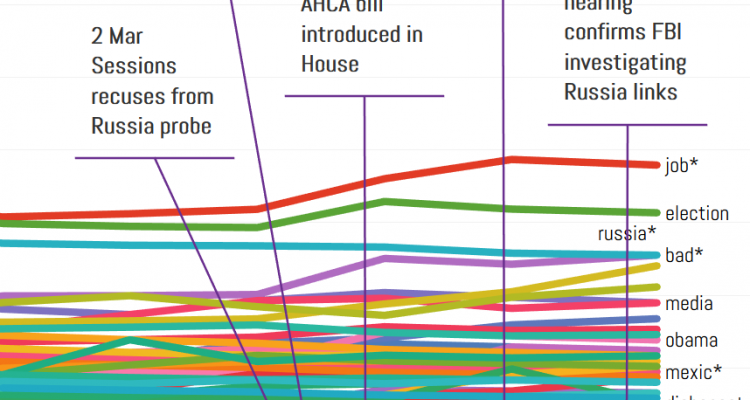

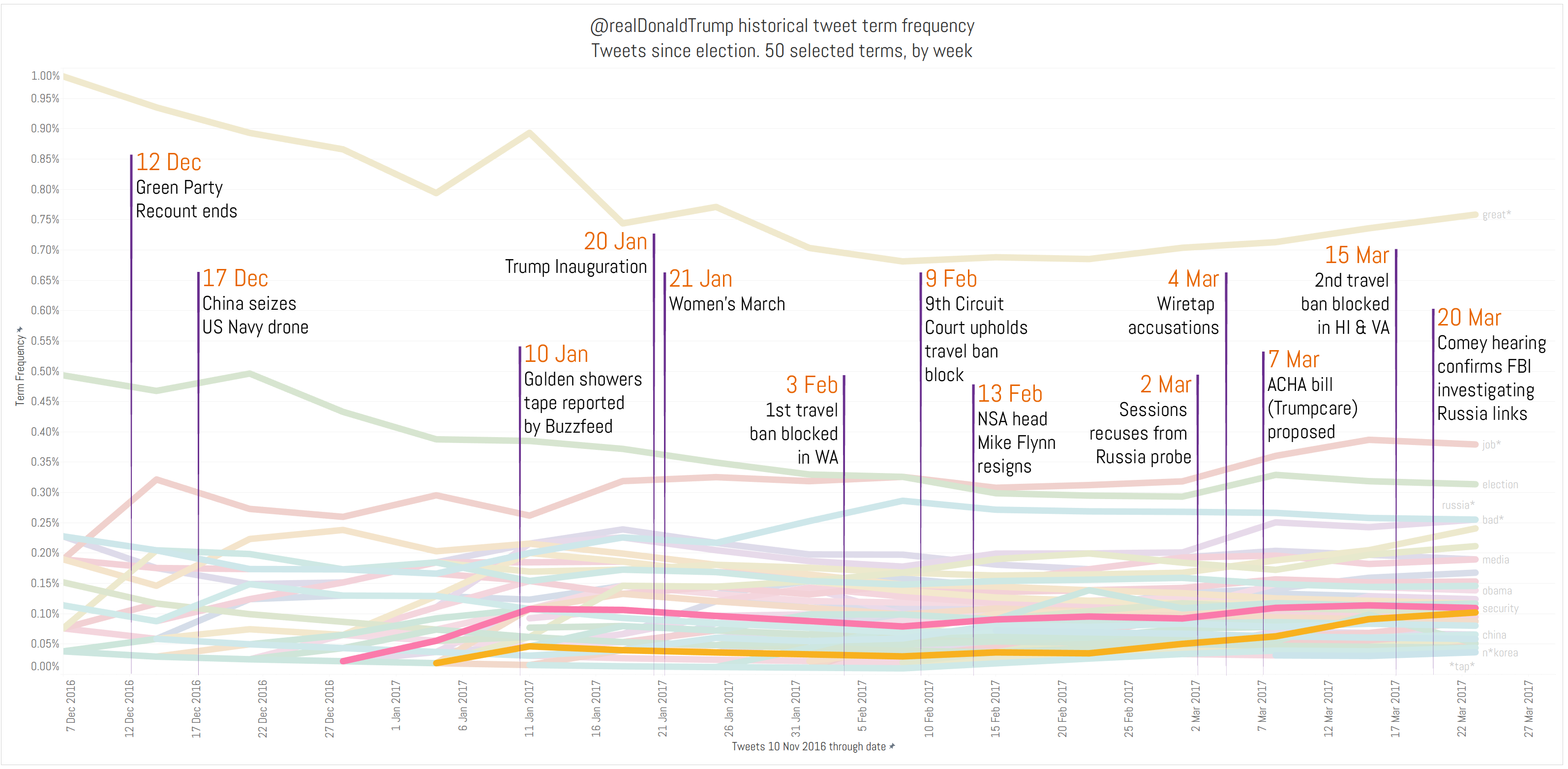
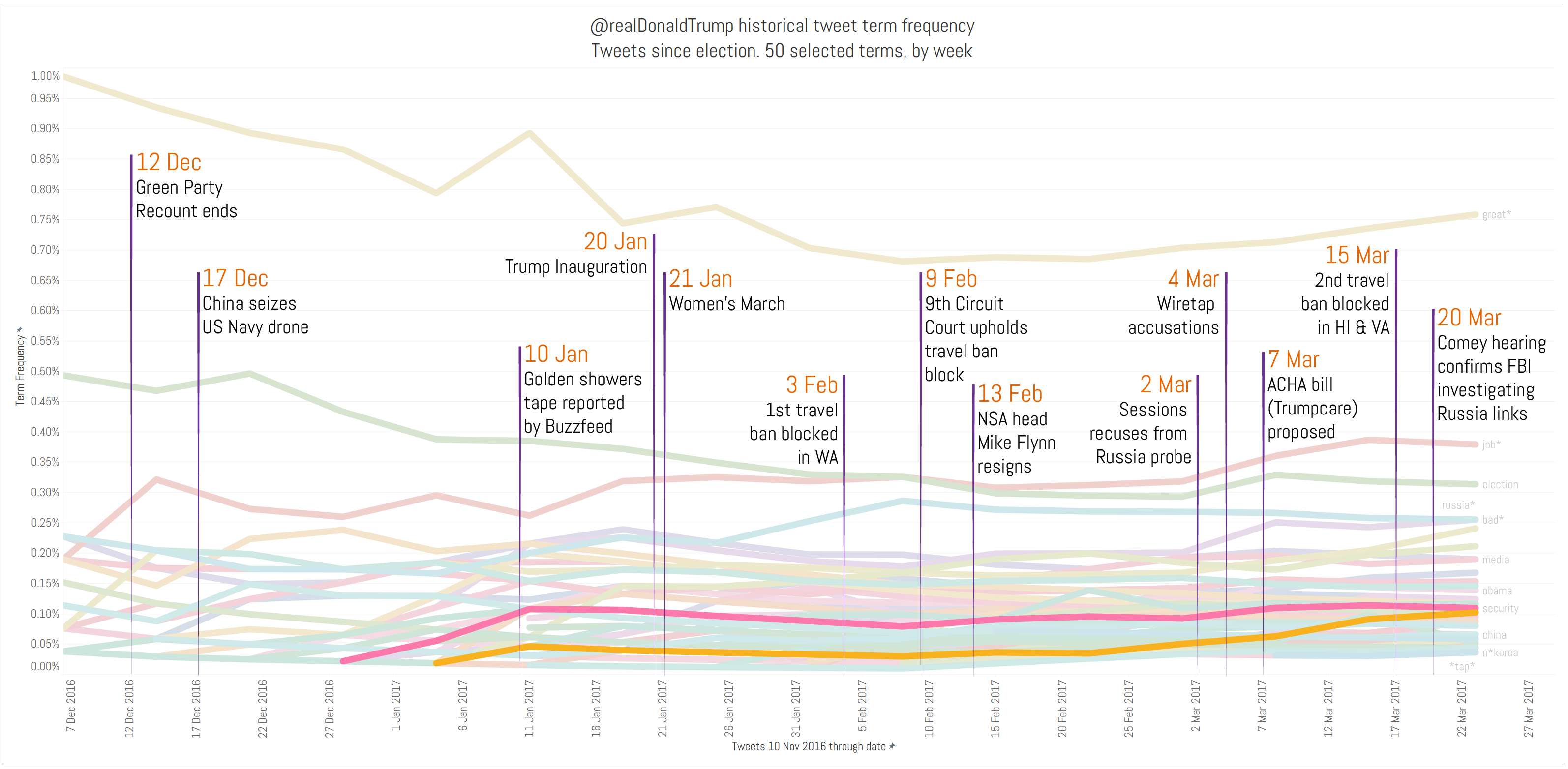
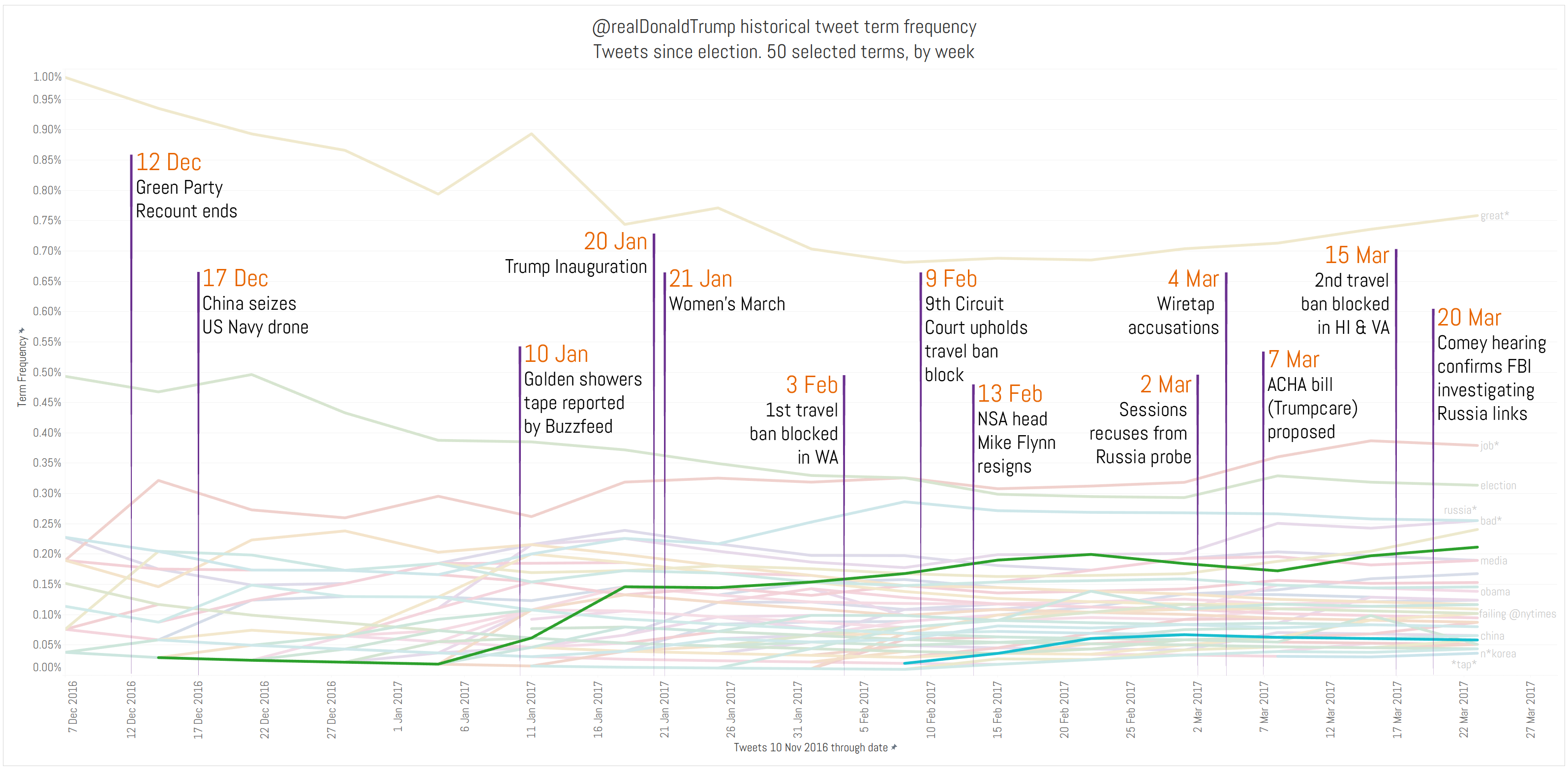
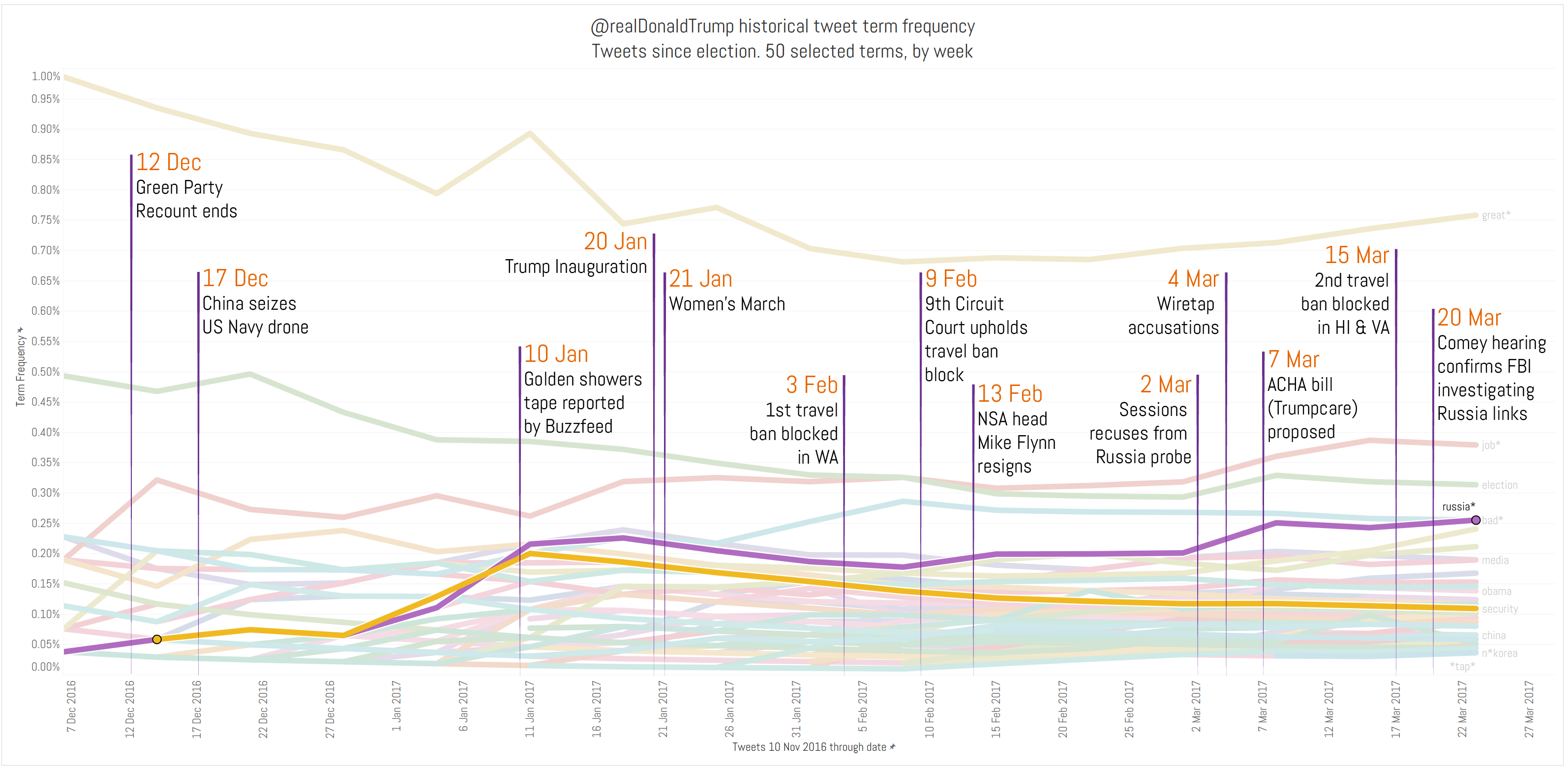
No Comments on "Trump Watch historical: How has @realDonaldTrump’s use of Twitter evolved since Election Day?"